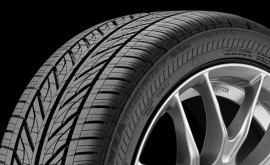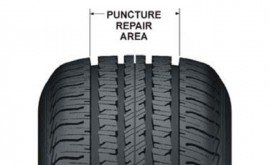Few drivers appreciate the importance of tires until they’re stranded on the side of the road with a flat. The truth is every mile we drive depends on these rubber donuts. In spite of their importance tires are surprisingly vulnerable; even a tiny puncture can keep you from going anywhere.

First of all before any mending can take place the tire has to be removed from its rim. This is mandatory. An internal inspection is required to ensure there’s no interior damage. Sometimes trouble can be more than skin deep, or in this case sipe deep.
A good internal inspection can head off other issues as well. There’s no point fixing a tire that’s been damaged from being overloaded or driven too far while underinflated. Additionally a tire’s speed rating can impact its repair-worthiness. For instance some manufacturers may not recommend patching high-performance models; some run-flat tires cannot be fixed either.

Beyond these restrictions, repairs cannot overlap. If a tire has been patched in the past subsequent repairs cannot intersect. If you had a boat with hull damage you probably wouldn’t want to put a patch on top of another patch. That would make for a weak fix and dramatically increase the chances of you getting wet.
So, if a puncture meets these requirements and is eligible for repair it needs to be fixed in the correct way. This is a two-step process. First, the offending hole must be plugged. There are several kinds of plug on the market but they all perform the same duty, filling the puncture so air can’t leak past. After the hole is filled an internal patch must also be applied, this is another reason why the tire must be removed from the rim. Saving time, one type of repair features the plug and patch in one unit.
SEE ALSO: What Does the Writing on My Tires Mean?
So remember, tires can be patched, but not all of them are eligible. If a puncture is too large or in the wrong place the tire is, unfortunately, scrap. Also, some high-performance and run-flat models cannot be repaired at all. Keep this in mind if a shop refuses to fix a puncture.
Despite their afterthought status tires are critically important to the safe operation of motor vehicles. Improperly repaired ones can fail in service leading to personal injury, property damage and even death, three things you want nothing to do with.








